
Plenary Speeches
| Plenary Speech | IEEE- Leading the world as a Technical Professional Organization |
|---|
| Presider: | Cheon Won Choi (Professor, Dankook University, Korea) |
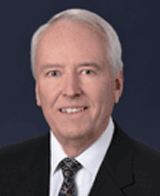 |
James A. Jefferies |
| Biography: | |
|
Jim Jefferies retired from AT&T and Lucent Technologies following 33 years in engineering and executive positions including fiber optic cable development and manufacturing, quality assurance, and supply chain management. He managed the engineering teams that delivered the first commercial fiber optic cables for AT&T. He served as logistics vice president, responsible for worldwide supply chain and export planning. He has led teams in major technology transfers, transitions of information technology, and organizational change. He has also worked in the entrepreneurial sector as Chief Operating Officer for USBuild.com in San Francisco, CA, USA. Jim served two separate terms on the IEEE Board of Directors, as well as the 2015 IEEE-USA President. As President of IEEE-USA, Jim supported the expanded focus on public visibility, young professionals, and humanitarian outreach. He received his BS in Electrical Engineering from the University of Nebraska and an MS in Engineering Science from Clarkson University. He attended the Stanford University Graduate School of Business as a Sloan Fellow and earned an MS in Management. Jim is a member of the IEEE Eta Kappa Nu honorary society and a licensed professional engineer (Emeritus). |
| ABSTRACT: |
|
IEEE has a significant impact on the technology world in all our fields of interest. Our publications, conferences, standards, plus region and society local activities all contribute to our mission of Advancing Technology for Humanity. We will discuss the trends impacting our traditional business models, the acceptance of the role of professional societies, and how we can respond. IEEE is a unique member led organization and our greatest strength is in our volunteer and staff leadership unity. While technical based, there are many other ways we can provide balanced support in policy, humanity, ethics, and values. IEEE can also advocate for the future of the profession in diversity, careers, professional growth, and education. IEEE will continue to lead the world as a 21st century technical professional organization with adaptation, openness, and commitment to our members and mission. |
| Plenary Speech | 5G for Hyper-connected Society |
|---|
| Presider: | Cheon Won Choi (Professor, Dankook University, Korea) |
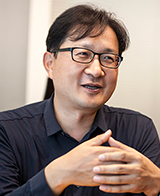 |
Jong Kwan Park |
| Biography: | |
|
As Head of Network Technology R&D Center, Mr. Park is responsible for the research and development of ICT and Network related technology in SK Telecom. He is leading the development of LTE-A, 5G networks and devices, next generation OSS, virtualization, connected car, and quantum cryptography communication technology. He joined SK Telecom in 1997 and has been served as the mobile core network and service specialist for more than 20 years. As leader of Core Network Lab since 2012, he has successfully completed the LTE & LTE-A deployment in South Korea. He also has led the world’s first HD Voice(VoLTE), VoLTE roaming, and NFV commercialization. He received his bachelor’s and master’s degrees in electrical engineering from Yonsei University in South Korea. |
| ABSTRACT: |
|
In the era of the Fourth Industrial Revolution, everything is connected and analyzed. It is also believed that the cyber space may not be discerned from the real world eventually. However, explosive data growth expected by the Fourth Industrial Revolution cannot be handled by existing network infrastructures. This is where the 5G mobile communication network plays and why 5G is called a “steam engine of this age.” 5G technology is characterized as ultra-fast speed, ultra-low latency, and hyper-connectivity. A physician on the land can operate on a patient at a medical facility in an island village through a hologram delivered on 5G networks. And 5G technology realizes offline services in the virtual world such as finance, shopping, and performance that has been provided in the real world. In addition, ultra-high-quality media such as UHD and VR / AR are delivered to users through 5G networks as if they are actually seen. It is also expected to evolve into a hyper-connected society developed through 5G and IoT technologies. For constructing the hyper-connected society, the smart city and the smart factory are essential components. The 5G infrastructure built in the smart city delivers traffic signal and intersection conditions to autonomous vehicles, letting them know which lane they should move to. Additionally, IoT devices detect accidents and disasters in the city and simultaneously spread the disaster situation through the 5G network, greatly reducing the risk. And the smart factory can replace human labor with machine operation through unmanned process in factory for citizen to concentrate on creative work. In a world where everything is connected, information security threats must be carefully addressed. Attacks on traffic, electricity, and communication infrastructure control systems in the smart city will pose a serious threat to social safety. And if manufacturing information and systems in the smart factory are attacked, corporate losses will be astronomical. Therefore, strong communication security by 5G infrastructure will be a basis of the bright future of the hyper-connected society. |
| Plenary Speech | 5G is reality – Transforming Industries and Lives |
|---|
| Presider: | Kyushik Hong (Professor, Seoul National University, Korea) |
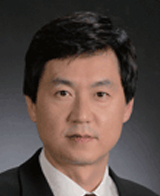 |
Kyungwhoon Cheun |
| Biography: | |
|
Kyungwhoon Cheun received his B.S. degree in Electronics Engineering from Seoul National University in 1985. He earned his M.S. and Ph.D. degrees from the University of Michigan, Ann Arbor in 1987 and 1989, respectively. He served as a professor at the University of Delaware from 1989 to 1991 and then at the Pohang University of Science and Technology (POSTECH) from 1991 to 2014. While at POSTECH, he headed the national ITRC center for Broadband OFDM Multiple Access (BrOMA), an eight-year research program supported by the Korean Ministry of Knowledge and Economy. Aside from his academic achievements, he, as an engineering consultant, has contributed to many breakthrough innovations in diverse industry areas of wireless communications and audio signal processing. He was on leave at Witechs and NSystems in San Diego where he developed efficient receiver algorithms for WLANs and WCDMA. From 2004 to 2011, he served as the Chief Technical Officer (CTO) of Pulsus Technologies Inc., taking the lead of developing sound processing algorithms and sigma-delta modulation based full digital audio amplifier SoCs. Since 2012, he has been with Samsung Electronics leading research and development for next generation cellular and Wi-Fi networks. Currently he is an Executive Vice President and head of R&D in Network Business, Samsung Electronics. |
| ABSTRACT: |
|
With the ever-increasing demands on mobile data traffic, stronger requirements on latency and reliability of novel mobile services, it becomes more challenging to meet those diverse needs by sheer migration of the existing cellular technologies. Innovative and pioneering technologies are now being used in the most advanced 5G trials yet and are helping to lay the foundation of critical 5G standards. Through research partnerships spanning the industry value chain, the viability of some of practical use cases is now demonstrated including fixed wireless access. The industry is now in need of productive ecosystem spanning the entire value chain that is capable of delivering on the promises of 5G. Samsung is actively working to make that a reality, in order to kick start tangible 5G applications. |
| Plenary Speech | Memory-Driven Computing: The Future Evolution of Cognitive IoT Technology |
|---|
| Presider: | Kyushik Hong (Professor, Seoul National University, Korea) |
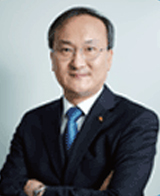 |
Seok Hee Lee |
| Biography: | |
|
EXPERIENCE AWARDS |
| ABSTRACT: |
|
As the ICT industry has entered the era of the Fourth Industrial Revolution, the “second wave” of artificial intelligence (AI) is also sweeping across the industry. In the second wave of artificial intelligence, which is characterized by more sophisticated AI services, there are growing needs for faster and more accurate and effective data processing technologies. Some of those technologies that recently gained traction are Cognitive IoT technologies that takes advantage of Cloud with robust learning algorithms such as Machine Learning and Deep Learning. It also adopts intelligence in IoT with highly sophisticated sensors and brain-like processors for implementation mainly in Autonomous Vehicle, Smart Factory, and Smart Home. In this trend, memory devices are expected to play a key role as AI environment becomes more ‘Memory-Driven Computing’. Therefore, in this presentation, I would like to shed light on the past and present of Memory Device technology under the AI and ICT environment that is becoming increasingly sophisticated, and also talk about the future memory device technology. In traditional and current systems, memory devices have been considered a fundamental performance bottleneck. As we approach the end of traditional Moore’s Law, however, performance gain for CPUs from technology scaling is slowing down, raising questions on the scalability of the performance of a computing system. In future emerging systems, memory devices will be a key factor for improving performance. DRAM has now started contributing to performance improvement in terms of high bandwidth through HBM. On the other hand, the NAND Flash industry has successfully commercialized 3D NAND. Besides, emerging memory technologies such as PCRAM, STT-MRAM, and ReRAM are being prepared for adoption in the near future. These memory devices will provide significant value to different applications based on their system-level workload, especially in the era of data-driven artificial intelligence computing environment, leveraging their own differentiated advantages in terms of performance, capacity, reliability, and cost. In the second wave of AI, Cognitive IoT is an important link that enables all objects to communicate with each other and create new value, and the basis of this will be “Memory-Driven Computing”. Also, changes in an AI environment will be an inflection point for memory device technology in terms of business model, technology innovation strategy, and ecosystem collaboration, and such changes will create challenges as well as opportunities for us. At the same time, in the second wave of AI, memory device is expected to play a key role as it positions itself higher up in the value chain through ‘forward integration’ which adds value through value chain expansion (Device to System) and customized standardization. |
| Plenary Speech | Communication science as guidance for NTT’s four AI directions |
|---|
| Presider: | Cheol-Hwan Kim (Professor, Sungkyunkwan University, Korea) |
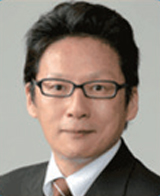 |
Takeshi Yamada |
| Biography: | |
|
Takeshi Yamada received a BSc in Mathematics at University of Tokyo. He joined NTT Electrical Communication Laboratories in 1988. He was a leader of a machine learning research group (2006-2009), an executive manager(2012-2013), and is currently Vice President and Head of NTT Communication Science Laboratories. He received Doctor of Informatics from Kyoto University (2003). He has been studying combinatorial optimization, relational data mining and statistical machine learning. He is also involved in formulating AI research strategies for NTT R&D. |
| ABSTRACT: |
|
The NTT Group is working on AI-related technologies under the brand name “corevo.” This word, meaning collaboration + revolution, evokes the idea of promoting innovation through a collaborative effort with a variety of players, as well as allowing human beings and artificial intelligence systems to collaborate. The corevo is advancing along four AI directions: (1) Agent-AI for supporting interactions between humans and computers; (2) Heart-Touching-AI for supporting humans by analyzing subconcious and indiscernible aspects of a person’s mind and body; (3) Ambient-AI for predicting and controlling objects, people, and their environment; (4) Network-AI for optimizing the entire social system with intelligent networks connecting multiple types of AI. To pursue these four directions, research on communication science is necessary to establish theories and technologies that capture the essence of human beings and information and enable mutual communication that reaches the hearts of human beings. For example, intelligent agents should be able to have long and sensible dialogue with people ranging from casual conversation to serious debate. The basis for Agent-AI includes speech recognition technologies that can handle situations involving several people talking freely at some distance from a microphone in a noisy space. The basis for Heart-Touching-AI includes understanding the mechanisms of human cognition and perception through brain science necessary to support people at deeper levels. For example, it may become possible to read people’s minds by analyzing unconscious eye movements, and specifically designed haptic devices may be utilized to convey information deeply rooted in the human body. Heart-Touching-AI with brain science can be further applied to train the brain to win at sports. In NTT Communication Science Laboratories, we are actively working on the fundamental research themes that will become the foundations for corevo. |
| Plenary Speech | Energy Transition and the Best Practice of International Standards Development of SGCC |
|---|
| Presider: | Cheol-Hwan Kim (Professor, Sungkyunkwan University, Korea) |
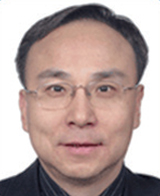 |
Jun Yu |
| Biography: | |
|
Jun Yu received his dual BS degrees in Electrical Engineering and Economics and MS degree in Electrical Engineering from Tsinghua University in 1991 and 1994 respectively. Afterwards he joined China International Trust and Investment Corporation, engaged in the management of power plant construction project. He received his Ph.D. in Electrical Engineering from Texas A&M University in 2000 and then worked at ERCOT for seven years. During this period, he served successively as Supervisor of Market Analysis & Development, Market Architect, and Manager of Business Architecture & Technology. From 2006 to 2011, he became the deputy director general of National Power Dispatching and Communication Center under State Grid Corporation of China (SGCC). From 2011 to 2014, he was the senior vice president of State Grid International Development Limited of SGCC. Currently, he is the deputy director general of the department of international cooperation of SGCC, responsible for the oversea assets operation and international organization business. As one of the key people in SGCC’s international business, Dr. Yu actively involved in SGCC’s international standardization activities, through which, he gains a deep understanding of the needs of standards developers, as well as that of different stakeholders. He has been the IEEE Senior member since 2003 and served as IEEE SA CAG member since 2015. |
| ABSTRACT: |
|
Today, promoting the transitional development of energy system towards the clean and low-carbon future has become an international trend. The energy system transition is a long and systematic process, relying on the large scale development of renewable energy as the core measure, the wide and deep re-electrification process as the fundamental approach, and the interconnected, smart and efficient modern grid as the basic platform. Standards are the crucial safeguard for the sustainable and healthy development of the next generation of electric power system. As the largest utility in the world, State Grid Corporation of China has been actively involving in the development of international standards. |
 HOME
HOME  BACK
BACK  TOP
TOP